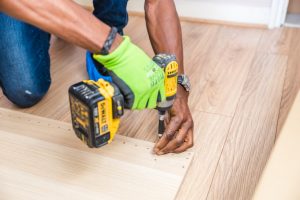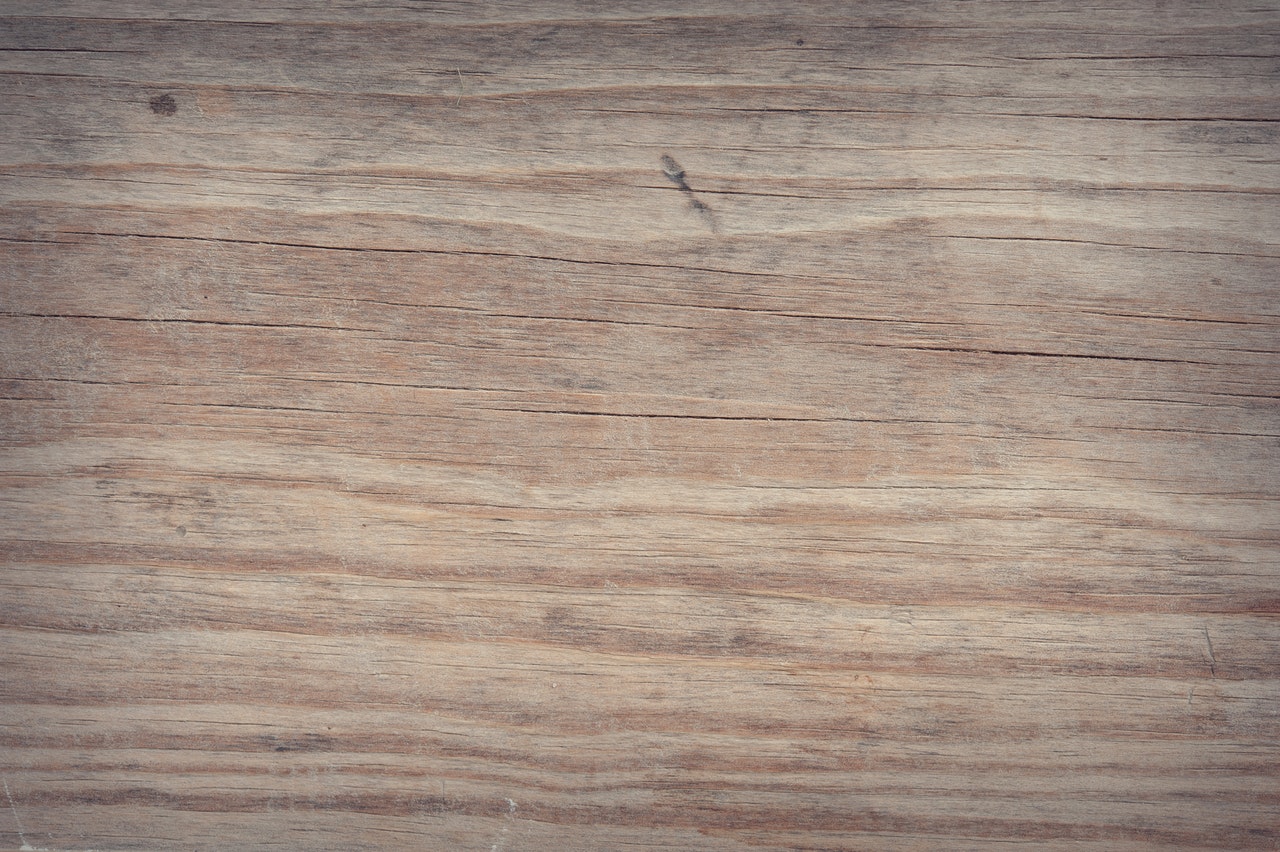When it comes to the topic of using epoxy resin on wood floors there is a lot of debate about whether it should be used or not, and what advantages it brings to the table.
While you can technically apply a clear epoxy coating to wood flooring, it is generally not recommended unless you are working with a specialist manufacturer. You can attempt to apply epoxy yourself, but your floor will require a lot of preparation and it is extremely difficult to get the finish to a high standard.
In order to decide whether using epoxy resin on wood flooring is worth it or not you need to consider the benefits and drawbacks, as well as the method for applying it and what conditions need to be met before it can be used.
What Is Epoxy Resin?
Epoxy resin is actually a broad term that describes a variety of different adhesives that can be used for many applications. Epoxy resin is formed of two parts – a hardener and resin – that react together quickly.
The type of epoxy resin that we are referring to in this article is known as a clear epoxy coating, which is essentially a transparent protective layer that is used for different types of flooring, but primarily concrete. You can use any color of epoxy coating that you like, but for the sake of simplicity, we will assume that you are trying to maintain the wooden floor look and enhance it will a clear coating.
It is important to understand this as there are other types of epoxy resins like epoxy filler that are used to repair damaged wood items such as wood moldings or time, and these can be easily confused with the clear epoxy coating that is used on flooring.
Can Epoxy Be Used On Its Own As Flooring?
Epoxy flooring is a real thing, and is normally classified as a layer of epoxy that is greater than 2mm in thickness.
It is made from a combination of polymer resins and hardeners and is known for its scratch resistance and overall durability. It is usually found in commercial settings, or in garages or basements in a home environment.
Benefits Of Epoxy Coating For Wood Floors
Although highly uncommon, epoxy coating does have some key benefits when added to wood flooring.
Protection
The major benefit of using a layer of epoxy resin on wood flooring is that it protects the floor from damage.
Wood floors are prone to be scratched, scuffed and stained. And even if you try to protect your floor from these things, it will still happen at some point. Adding a solid layer of epoxy keeps the surface of the wood protected from these risks.
Unique Aesthetic
Odds are if you are considering using an epoxy coating on your wood floor, it’s because you like the aesthetic that it provides.
It’s fair to say that you cant achieve a similar finish with many other treatments – even a high gloss wood sealant won’t have the same look.
Drawbacks Of Epoxy Coating For Wood Floors
Most of the drawbacks from from the preparation that is required, as well as the difficulties you will encounter during application.
Wood Flooring Is Affected By Humidity
Epoxy as a material doesn’t contract or change shape under different temperatures or humidities, unlike wood.
Wood flooring changes shape depending on the humidity, so you need to ensure that it is 100% sealed from above and below to prevent any moisture changes within it. If the wood begins to change shape it can result in buckling or cupping, to name a few, which will create stress within the epoxy layer above.
Preparation Is Complicated
Preparing your wood floor for a clear epoxy coat takes a lot of time and expertise.
Firstly, any gaps or damaged floorboards need to be addressed. If the damage is severe you may need to replace certain floorboards, and removing gaps between them is a lot easier said than done.
Once this is done, you’ll need to sand the entire surface and then apply a coat of latex primer to ensure the epoxy can stick to the surface. The sanding process requires a buffing machine, which you will need to either purchase, borrow or rent.

Lots Can Go Wrong During Application
Applying epoxy correctly relies on a lot of knowledge of the particular type of epoxy that you are using, what tools you have available and how it interacts with the temperature and humidity of the room it is placed within.
All of this is expert knowledge that makes it incredibly difficult for a beginner to undertake, and also why we recommend contacting a professional if you decide to go ahead with it.
If you don’t believe us, just read this story about a DIY epoxy application to see just how hard it can be.
How Clear Epoxy Coating Is Applied Directly To Wood Floors
Remember that you can use any color epoxy coating that you like, but we are assuming that you are using a clear coating to preserve the floor below!
Clean
The first thing to do is give the wood floor a good clean.
Start by vacuuming, and then mop the entire area with a good hardwood floor cleaner to get rid of any stains or grease.
Address Structural Problems Or Damage
This is where it gets tricky.
A clear epoxy coat needs to be applied to a solid and level surface, otherwise, you will have difficulties as it sets and also during application. To achieve this you need to fix any gaps between floorboards, as well as any structural problems such as buckling or cupping.
You can use a wood patching compound to fix any cracks or gaps if you want an easier option.
Sand
Once the floor is repaired you can sand it down using a buffing machine/floor sander.
A 40/60 grit machine is recommended for this, and make sure that you sand the entire area as this is crucial to prepare the floor for the application of epoxy.
Apply Primer
Apply a primer around the perimeter of the floor carefully with a paintbrush following the grain of the wood.
Afterwards, use a roller to apply the primer to the rest of the wood, again following the grain. Let this dry fully before moving on to the final step.
Mix The Epoxy And Apply
Once you’ve chosen the clear epoxy coat that you want (or a colored one!) then all that’s left is to apply it according to the instructions on the label.
Let this dry fully and then you should be finished!
Alternative Method Using Concrete
In most cases, professionals will only add epoxy onto concrete.
In this case, the wood floor would be ripped out entirely to uncovered concrete below or a layer of concrete would be added on top of the wood once it has been sanded down and any damaged planks fixed.
Once the concrete is either exposed or added it can be treated for application and then coated with the resin, and this is more common practice than simply coating wood with a clear epoxy layer.
FAQs
What Types Of Flooring Is Epoxy Resin Suited For?
If epoxy resin is added to any type of flooring, it is usually concrete.
Epoxy works extremely well in conjunction with concrete as it allows for a strong bond while improving the surface qualities of the concrete.
When Should You Consider Using A Professional?
As you can probably tell from the method above, applying epoxy resin to wood flooring is very difficult and requires knowledge of a few key tools and techniques like sanding.
There are also a lot of things that can go wrong as the epoxy sets, such as bubbling and blistering, and these can be very difficult to control if you don’t have a good understanding of the type of epoxy you’re working with and the conditions it requires.
Final Thoughts
When it comes to using epoxy resin on wood floors it is highly uncommon, and usually, it would be added to concrete instead.
Despite this, it is still technically possible to add a clear epoxy coating directly to wood floors but the process is quite technical and difficult to undertake on your own. Don’t hesitate to contact a professional if you have decided that this is the finish that you want for your floor.
